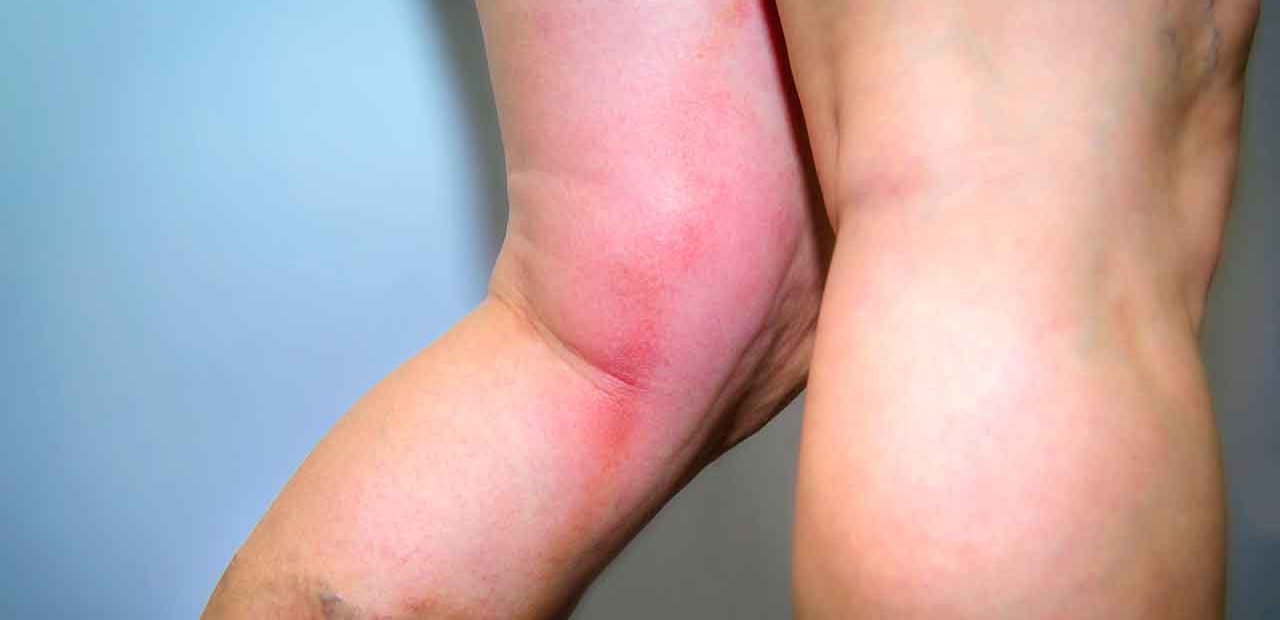Signs and Symptoms of a Blood Clot

Swelling, pain, or tenderness in a vein, usually in a lower leg, may be signs or symptoms of a blood clot, which can be dangerous if it travels to your heart or lungs.
After an injury that causes bleeding, your blood needs to change from liquid to a gel-like state — called clotting — so you do not lose too much blood.
But sometimes a clot forms inside a deep vein, a condition called deep vein thrombosis.
Blood clot in your legs or arm
Blood clots are most common in your lower leg, but they can occur in your arm or pelvis, or in your lungs or brain. One of the telltale signs of a blood clot in your leg is an unexplained swelling. Your leg might be pale or bluish, feel warm and tender to the touch. If the clot is large, you’ll be in pain.
About 100,000 Americans die every year from a blood clot. The trouble is that the signs of a blood clot are easily mixed up with other problems, or ignored. About half of the time, people with blood clots have no symptoms of a blood clot at all.
YOU MIGHT ALSO LIKE: How to Lower Blood Pressure
Blood clot in your lungs
If a blood clot that begins in a limb travels up to your lungs, it is called a pulmonary embolism. You might find yourself short of breath for no obvious reason. Your heart rate may speed up or your chest might hurt. You might cough up blood. A pulmonary embolism may damage your lungs and other organs or even be fatal.
Bad abdominal pain, which it’s easy to blame on food poisoning, or swelling, could be signs of a blood clot in that part of your body.
If you develop a blood clot in your heart, your chest might hurt or feel heavy, and you could be lightheaded or have trouble breathing.
If you experience a sudden, sharp headache and have trouble speaking or seeing, you may have a blood clot in your brain.
Call 911 immediately if you experience sudden, unexplained shortness of breath, chest pressure, or difficulty breathing, seeing, or speaking. The first step is most likely a noninvasive ultrasound, which will create an image of your veins and perhaps reveal a clot.
Risk factors for blood clots
Anyone who has recently stayed in a hospital, often after a major surgery, is at higher risk of a blood clot. People over the age of 65 are at more risk. Obesity is another risk factor. A family history of blood clots, smoking, and cancer increase your risk as well.
If you’re on bed rest or sit for long periods of time, blood may begin to pool in your lower legs. Normally, your muscles are forcing blood back to your lungs and heart. If that doesn’t happen, a clot may form in the pooled blood.
Higher estrogen levels can cause your blood to clot more easily. So if you’re pregnant, when you’ll have more estrogen, or taking estrogen in birth control or hormone replacement therapy, your chances of a blood clot increase.
Once you’ve had a deep vein thrombosis, you run a 5 to 7 percent risk each year of a second, studies indicate. Your doctor may offer you an anti-coagulant drug, which makes clotting less likely — but at some point you’ll probably be better off stopping the medication. People taking these drugs run an estimated risk of 1 to 4 percent a year of major bleeding. Your risk of a blood clot will go down over time, and the risk of too much bleeding will go up. The next step, after you go off the medication, may be to take aspirin daily, which research suggests lowers your risk of a second deep vein thrombosis by 30 percent.
Updated:
March 03, 2020
Reviewed By:
Janet O’Dell, RN